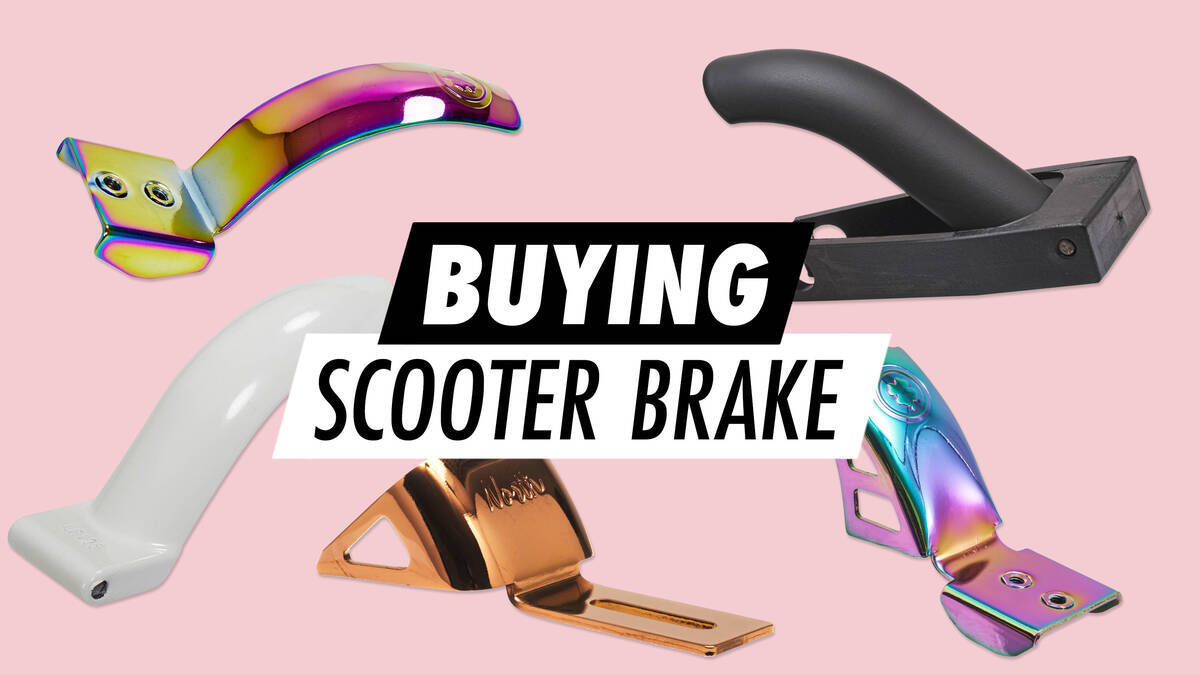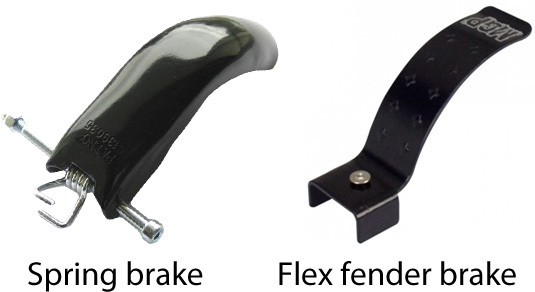Purchasing a Scooter Brake

The purpose of a brake is to reduce speed or prevent an accident.
To maximize braking effectiveness, apply the brake lightly while shifting your weight backwards on the scooter.
Avoid obstructing your wheel/brake on the scooter, as this causes weak braking power and can lead to flatspots on your wheel, irrespective of the wheel's brand or quality.
The diagram below illustrates the 2 most prevalent brakes.

- A spring brake is installed on the secured bolt, which fastens to the deck. A spring on the bolt ensures the brake remains elevated and away from the deck.
- A flex fender brake consists of a lengthy metal plate pre-shaped to encircle the wheel. It is generally fixed to the deck using one or more screws. When the metal plate is pressed down, the entire plate curves towards the wheel.
Both brake types accommodate 100 mm and 110 mm wheels, as detailed in the product information.
Tips:
- Avoid blocking your brake (Flatspots, which cause wheel hopping, can be prevented)
- Featuring additional components, spring brakes usually produce more noise compared to flex fender brakes.
- The lifespan of flex fender brakes is often shorter because of their design.
- Achieving a completely noise-free brake for prolonged durations is not feasible.
- Brakes designed for 100 mm wheels will not accommodate 110 mm wheels.
- However, 100 mm wheels are compatible and functional with a 110 mm brake.
- Compatibility issues may arise, as not all brakes fit every deck model. (Stick to the same brand and type)
- If a wheel has become too worn out, flex fender brakes may break more easily because the plate must extend further to make contact. Always replace wheels before they are fully depleted!
This video demonstrates how to install a flex fender brake on your deck:
Return to Assembling a Custom Trick scooter
Return to Stunt Scooters explained
